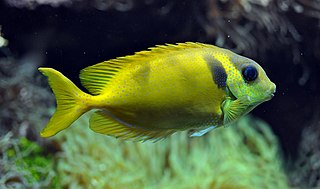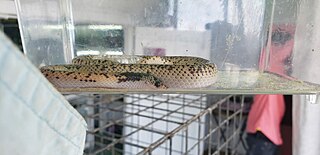
Neopterygii is a subclass of ray-finned fish (Actinopterygii). Neopterygii includes the Holostei and the Teleostei, of which the latter comprise the vast majority of extant fishes, and over half of all living vertebrate species. While living holosteans include only freshwater taxa, teleosts are diverse in both freshwater and marine environments. Many new species of teleosts are scientifically described each year.

The Integrated Taxonomic Information System (ITIS) is an American partnership of federal agencies designed to provide consistent and reliable information on the taxonomy of biological species. ITIS was originally formed in 1996 as an interagency group within the US federal government, involving several US federal agencies, and has now become an international body, with Canadian and Mexican government agencies participating. The database draws from a large community of taxonomic experts. Primary content staff are housed at the Smithsonian National Museum of Natural History and IT services are provided by a US Geological Survey facility in Denver. The primary focus of ITIS is North American species, but many biological groups exist worldwide and ITIS collaborates with other agencies to increase its global coverage.
Malampuzha, IPA: [mɐlɐmbuɻɐ], is a village in Palakkad district of Kerala, South India, near to the Malampuzha Dam.

The Syngnathiformes are an order of ray-finned fishes that includes the trumpetfishes and seahorses.

Hypoptopoma is a genus of armored catfishes native to South America.
Nannoptopoma is a small genus of catfishes of the family Loricariidae. This genus includes two species, N. spectabile and N. sternoptychum.
Hypoptopoma spectabile is a species of armoured catfish native to the Amazon and Orinoco river basins in Colombia, Ecuador, Peru and Venezuela. This species grows to a length of 2.9 centimetres (1.1 in) SL.
Hypoptopoma sternoptychum is a species of catfish of the family Loricariidae.

Phimophis guianensis, also known commonly as Troschel's Pampas snake, is a species of snake in the subfamily Dipsadinae of the family Colubridae. The species is endemic to South America.

Brosimum guianense, called snakewood, letterwood, leopardwood, and amourette, is a species of flowering plant in the genus Brosimum, native to southern Mexico, Central America, Trinidad, and tropical South America. A tree reaching 40 m (130 ft), its heartwood can command a price of $30 per kg.
Hypoptopoma baileyi is a species of catfish of the family Loricariidae.
Hypoptopoma bianale is a species of catfish of the family Loricariidae.
Hypoptopoma brevirostratum is a species of catfish of the family Loricariidae.
Hypoptopoma elongatum is a species of catfish of the family Loricariidae.
Hypoptopoma incognitum is a species of catfish of the family Loricariidae.
Hypoptopoma machadoi is a species of catfish of the family Loricariidae.
Hypoptopoma gulare is a species of catfish in the family Loricariidae. It is native to the Amazon and Ucayali basins in South America. It reaches 10.5 cm SL. It is sometimes seen in the aquarium trade, where it is referred to as the giant otocinclus, despite not belonging to the genus Otocinclus.

Hypoptopoma inexspectatum is a species of catfish in the family Loricariidae. It is native to the Paraná and Paraguay basins in tropical South America. It reaches 7.1 cm SL.
Hypoptopoma joberti is a species of catfish in the family Loricariidae. It is known to inhabit rivers in South America, with specimens being collected from the Matos River in Bolivia. While ITIS lists this species as valid, FishBase considers it to be a synonym of Hypoptopoma gulare.





